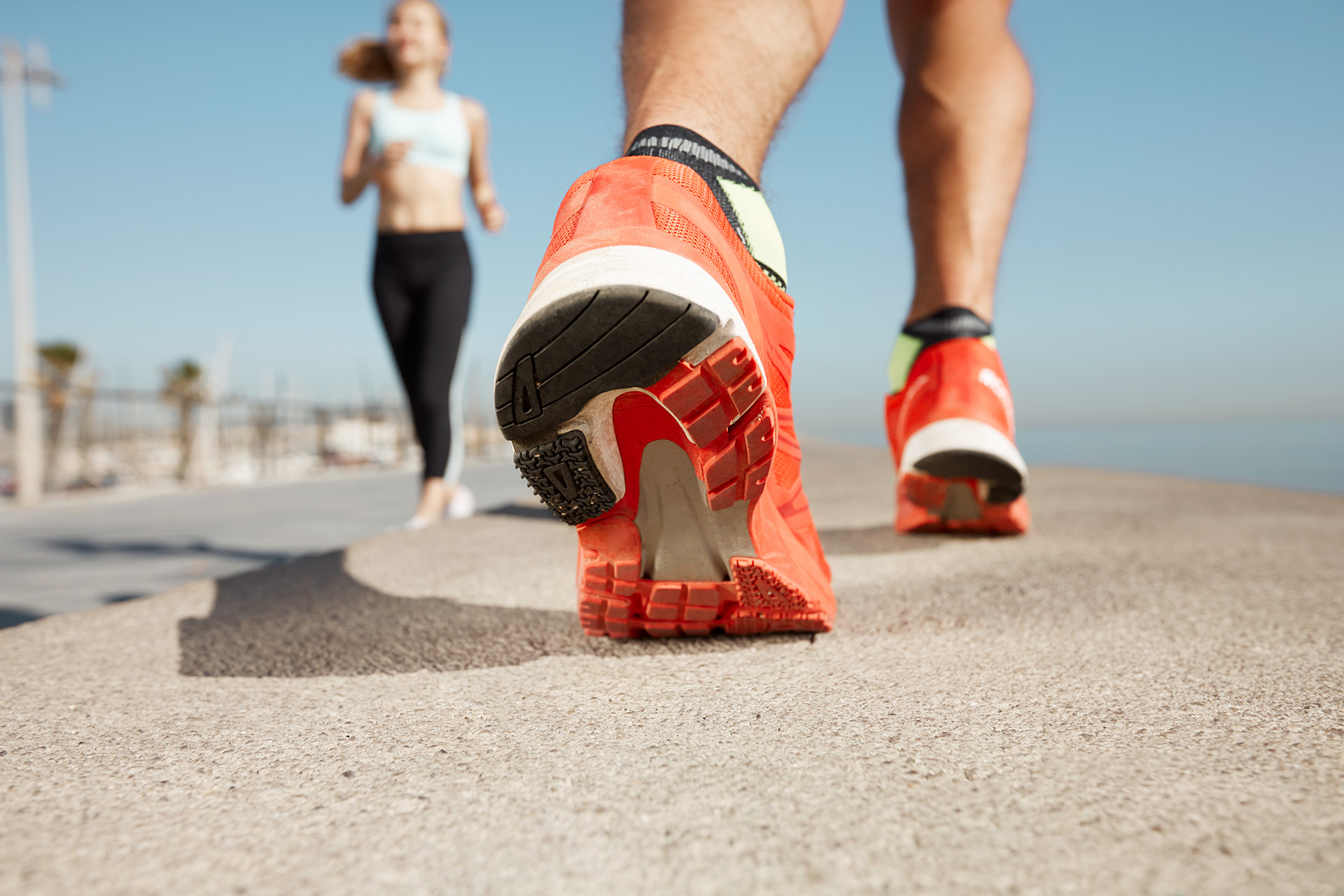Are you running efficiently?
We crawl, we walk, we run, but are you running efficiently?
Our foot strike, knee elevation and drive, posture and strength all influence how efficient we are, and can be, as Runners.
It’s all about using the least amount of energy to cover the greatest distance more comfortably.
Let’s start with foot strike.
There are three common foot strikes when running – forefoot (toes), midfoot (behind the ball of the foot) and heel strike.
When considering efficiency and sustainability, a midfoot strike is viewed as being the ideal strike point. Here’s why;
Landing on the midfoot provides the greatest level of stability and shares the load on the legs more evenly as opposed to forefoot/toe strike or heel strike. Midfoot strike also leads to higher cadence (the number of times your foot strikes the ground) which results in faster pace. Forefoot strike (rarely does the heel touch the ground) can lead to even higher cadence but is often adopted when sprinting as it has the benefit of greater responsiveness on impact but can be challenging to sustain over distance. With forefoot strike the calf muscles work over time, shortening and contracting during their gait cycle which can be taxing on these muscles. Imagine running in high heel shoes – lowered stability on landing leading to greater impact on lower limb muscles, fatigued calves and achilles and the risk of injury. However, still with a focus on responsiveness, but more kind to the body over distance, midfoot strike propels the body forward, keeping momentum with a heel flick behind, the stride length places the foot under the greatest body mass when landing and the foot bounces off the ground comfortably, quickly and with stability. Compared to toe strike, midfoot strike is far more efficient over distance AND reduces the risk of overworking key muscle groups. Midfoot strike is also a more beneficial foot strike for efficiency gains compared to the third mentioned foot strike point, heel strike. Heel strike pulls the body back, ‘putting the brakes on’ and losing forward momentum, which can lead to over striding – landing the foot too far forward of the body resulting in a slower cadence and a greater force on the hamstrings.
So to keep momentum, improve pace, conserve energy and potentially reduce the risk of overuse injury, midfoot strike is viewed as being the most efficient foot strike.
Foot strike point is only one piece of the run efficiency puzzle. Now let’s talk posture. For running efficiently, let’s consider one of the main movement factors we are faced with, gravity. To run efficiently, we need to work with gravity not against it. Adopting a posture with a slight lean forward but continuing to keep the chest up and open, a relaxed upper body and a midfoot strike, energy usage is reduced and running just become that little more efficient. Even with the slight lean forward we want to still maintain a relatively tall posture keeping the head up and in neutral position so you are looking a few metres ahead not down to the ground. In distance running we want to ensure we conserve energy so limit the use of the arms. The arms are free moving in the direction we are running. Avoid swinging the arms across the body creating unnecessary resistance or force against the body. In faster paced running, such as sprinting, the arms play a greater role in driving us forward, but for a more sustainable pace over distance, let’s keep the arms relaxed, shoulders back and down, chest up and ‘open’ to allow air in, arms swinging naturally beside the body and hand grip which is representative of a light ‘cup’ grip – no clenched fists or white knuckles!
Through understanding the benefits foot strike and posture play when running you will master the most efficient way to run but does it stop there? No! An efficient runner is also a strong runner. Running efficiently is not all about just running. Strong, responsive muscles that can last the distance are key to becoming the most efficient runner, staying injury free and addressing any run based imbalances. Strong bodies are also more ready to be fast bodies! Invest in a well-rounded exercise program that builds in functional strength and flexibility training and ensure the program targets more than just the legs. Focus on legs, glutes, core and shoulders. A strong runner is a more efficient runner – faster, more powerful, more responsive, more efficient!
Note: If not experiencing injury and if comfortable with your running, there may be no need to change the way you run. However, if you are finding you have a repeat injury or ongoing pain associated when running OR you are investing to become a more efficient runner, faster and stronger, you may wish to consider working with a coach to re-train your running technique. Zone Performance Coaching will work with you to support your run goals.
